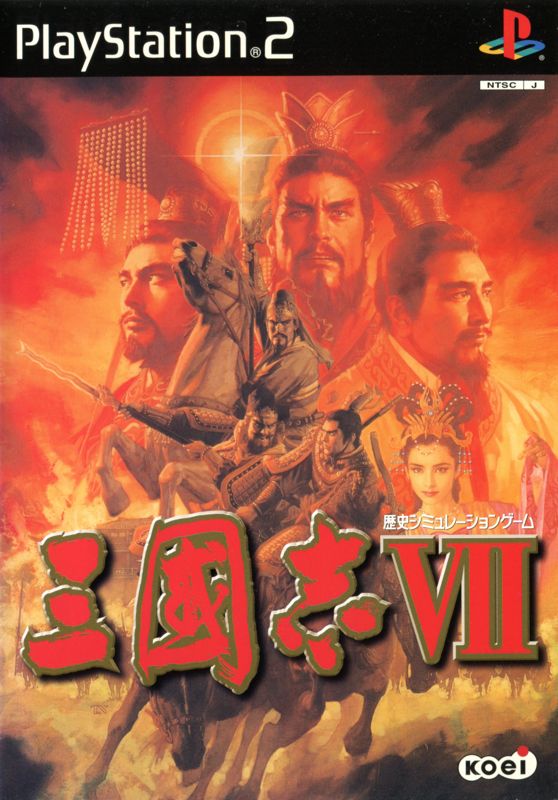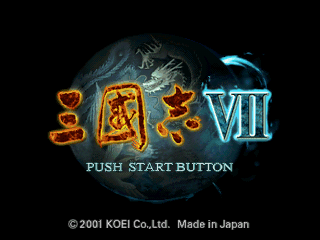Retro Replay Review
Gameplay
Romance of the Three Kingdoms VII maintains the series’ reputation for deep, methodical grand strategy. Players begin by selecting one of several historical scenarios—ranging from the initial collapse of the Han dynasty to later power struggles—and then assume control of a warlord’s domain. From there, every turn involves juggling taxation, infrastructure development, troop mobilization, and diplomatic overtures. Fans of cerebral planning will appreciate the layers of decision-making required to guide a fledgling state to supremacy.
(HEY YOU!! We hope you enjoy! We try not to run ads. So basically, this is a very expensive hobby running this site. Please consider joining us for updates, forums, and more. Network w/ us to make some cash or friends while retro gaming, and you can win some free retro games for posting. Okay, carry on 👍)
One of the most notable enhancements in this installment is the freedom to play as virtually any historical character, each with unique stats in leadership, intelligence, politics, and war. These attributes directly influence everything from negotiation outcomes to battlefield morale. Managing internal affairs—appointing officers, quelling unrest, and fostering economic growth—can feel like running a miniature empire. The balance between military conquest and civil governance is delicate, and poor choices in one domain often have cascading effects in another.
When armies collide, battles shift to a turn-based tactical map where unit formations, terrain advantages, and timing are critical. Cavalry charges down hills, archers hold chokepoints, and generals with high command ratings can turn the tide. While the AI occasionally falls into predictable patterns, the richness of unit types and the strategic map’s scale ensures that each engagement remains fresh. For dedicated strategists, RTK7’s depth provides endless opportunities for creative conquest.
Graphics
Transitioning to full 3D graphics marks a significant visual leap for the series. The overland map boasts smooth camera rotation and zoom levels that let you inspect individual provinces or survey broad regions. Terrain features such as rivers, mountains, and cities are rendered with crisp textures, making it easier to plan campaigns around natural chokepoints or fertile plains.
Unit models on the battlefield—infantry, cavalry, archers, and siege engines—are distinct and well-animated. Troop movements feel weighty, and simple touches like banners fluttering in the wind enhance immersion. The user interface, while functional, sometimes feels cluttered when toggling through campaign menus, officer rosters, and diplomatic reports. However, custom color-coding and map filters help mitigate information overload.
Character portraits and event illustrations retain the series’ traditional aesthetic, blending hand-drawn artwork with subtle animations. Loading times between screens are generally short, though older hardware may struggle with higher resolutions. Overall, the graphical upgrade succeeds in bringing ancient China to life without sacrificing clarity—an achievement that benefits both newcomers and franchise veterans.
Story
Unlike narrative-driven titles, RTK7 offers a sandbox approach to storytelling. There is no single campaign narrative; instead, players craft their own epic through historical scenarios like the Yellow Turban Rebellion or the Battle of Guandu. This open-ended structure fosters emergent narratives, as alliances form and shatter, betrayals erupt, and unexpected heroes emerge.
Characters are more than mere statistics. Generals and ministers react to events and rivalries: a slighted officer might defect, while a benevolent governor can improve public morale. Random events—famine, bandit uprisings, natural disasters—inject drama and force players to adapt their plans. These moments create personalized stories that differ with every playthrough, encouraging experimentation and replayability.
For history buffs, the game’s attention to period details deepens the sense of authenticity. Official rosters mirror historical records, and scenario briefs provide context for each conflict. While the narrative unfolds through mechanics rather than cutscenes, the blend of strategic choices and historical setting delivers a compelling tapestry of ambition, loyalty, and conquest.
Overall Experience
Romance of the Three Kingdoms VII offers a richly layered strategy experience that demands patience and foresight. Its blend of domestic management, diplomacy, and tactical warfare delivers a cohesive challenge for dedicated strategists. Each victory feels earned, and setbacks prompt careful reassessment of priorities—hallmarks of a deeply engaging grand strategy title.
That said, the game’s learning curve can be steep. Interface complexity and the sheer volume of statistical data may intimidate newcomers. Fortunately, improved tutorials and adjustable difficulty settings help ease new players into the series’ trademark depth. Seasoned fans will find plenty to savor, while strategy novices who enjoy cerebral decision-making will discover a rewarding, if demanding, journey.
In sum, Romance of the Three Kingdoms VII is a standout entry for those seeking an immersive, historically grounded strategy epic. Its 3D visuals, dynamic character interactions, and expansive strategic systems combine to create an experience that both honors its lineage and pushes the series forward. Potential buyers looking for a contemplative, long-form challenge set in ancient China will find few deeper, more rewarding offerings in the genre.
 Retro Replay Retro Replay gaming reviews, news, emulation, geek stuff and more!
Retro Replay Retro Replay gaming reviews, news, emulation, geek stuff and more!








Reviews
There are no reviews yet.